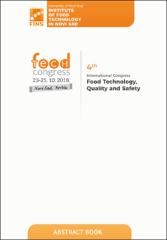| dc.description.abstract | Medicinal herbs are increasingly used as a "natural" method of treatment. The
maximum number of total molds and yeasts in pharmaceutical preparations is
prescribed. The presence of mold is not advisable due to possible production of
mycotoxins. The literature has not recorded a lot of research on the subject tests
mycoflora herbs in Serbia.
This paper provides results of fungi analysis in seven different plant species
(Thymus serpyllum, Matricaria camomilla, Achillea millefolium, Hypericum
perforatum, Urtica dioica, Salvia officinalis, and Mentha piperita) from three
locations in Serbia traditionally used in the treatment. In order to test an effective
method of disinfecting medicinal herbs, the samples were analyzed without prior
disinfection, after disinfection with ethanol, and after the application of UV
radiation.
After analyzing a total of 960 plant parts, nine fungi genera were identified. The
results showed that samples originating from the eastern (Stara/Suva planina)
and western Serbia (Zlatibor) were contaminated with different types of fungi
(Fusarium sp., Mucor sp., Aspergillus sp., Penicillium sp., Alternaria sp.), while
the samples from eastern and northern Serbia (Orom) are mutually similar to the
type of contamination (Fusarium sp., Alternaria sp., and Mucor sp.). Between
samples collected from nature (Zlatibor and Stara/Suva planina) and organic
production samples (Orom) there was no significant difference in the frequency
of contamination. Applied chemical disinfection has proven effective for genera
Fusarium and Penicillium, while UV radiation was more effective for mold genus
Alternaria and Mucor. Due to the obtained results, further tests are necessary in
order to determine whether fungi can produce mycotoxins in conditions of
breeding, climate, storage, and transport in Serbia | en_US |

